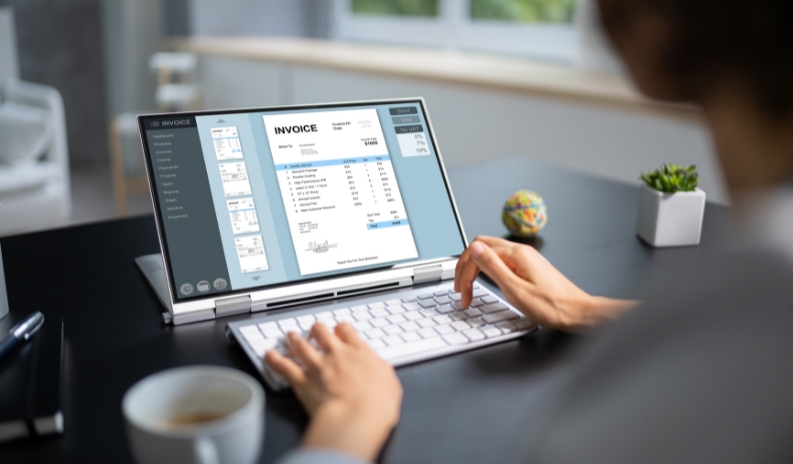Peppol E-invoicing How Does It Work, Benefits + Cons
by Ankita Tripathy Finance Published on: 14 May 2022 Last Updated on: 20 May 2025

Peppol e-invoicing promotes commercial partnerships by bringing together customers and sellers. Although e-invoices are the most common document type handled by peppol, the company also handles credit invoices, orders, and price lists.
The PEPPOL or Pan-European Public Procurement online network is an international standard network that simplifies cross-border e-invoicing. It also takes care of procurement in the public and private sectors.
Peppol/PEPPOL was originally developed in Europe and is used globally to facilitate standardized electronic invoicing which reduces barriers to trade. These insurance documents are exchanged in a secure compatible and efficient format.
Peppol is Made Up of the Following Three Parts:
- It is a means for electronic data transmission between business partners.
- Peppol accepts a variety of documents in addition to electronic invoicing.
- An electronic document format for e-invoices that is industry standard.
The European Union regulation establishes member states’ responsibilities and how Peppol should be controlled (EU statute). BIS Peppol The network’s standard invoicing format is 3.0. Electronic forms, such as Svefaktura and Fininvoice, can, however, be transmitted.
Neither party’s ERP system, accounting software, or invoicing software handles the paperwork. Peppol is frequently granted access by an e-invoice operator. Access points can be requested from a number of different sources. To deliver the data, the following XML file types are used:
- Invoices from a variety of industries
- UBL is the most used XML format. Suppliers may bill their customers in any format, but public institutions must accept both
New Format of Payment – E-Invoicing

Invoices, credit notes, and debit notes may all be processed electronically, and the exchange of these documents is conceivable.
Through the Peppol design of the National e-invoicing framework, it is possible to send electronic invoices directly across financial systems without the need for any intermediaries.
You save time by avoiding the need to validate and track down payment receipts. The Peppol ID search is now also viable for all members.
The Peppol network makes use of BIS Billing 3.0 UBL to transport documents to and from the Peppol server, and this is known as UBL (Business Interoperability Specifications). It is possible to exchange invoices across accounting and enterprise resource planning systems, allowing customers to select the people solutions that are best fit for their requirements.
The use of network gateways, also known as Access Points, allows for the distribution of documents over the Peppol network infrastructure. On the Peppol network, Access Points may convert invoices into a standard format and then distribute them to Access Points that will receive the bills from the recipients.
Related Resource: Here’s What You Need to Know About Controlling and Automating Accounts Payable
How the Peppol Network Works

peppol allows Governments and businesses to exchange standardized electronic documents such as purchase orders invoices and shipping notices. It does so through a secure structured network. Here’s how Peppol e-invoicing makes it possible:
- Peppol uses a set of standards called PEPPOL BIS or business interoperability specifications. The standards define document formats and protocols for e-invoices. This allows all parties to use the same structure and information field.
- People operate through a network of access points which are certified service providers responsible for receiving and sending documents on behalf of the users. Each access point is registered with Peppol, which ensures compliance with network standards.
Each receiver and sender connect to the Peppol e-invoicing network through their chosen access point. This makes it a secure and interoperable environment.
- The unique Peppol ID allows participants to have a digital address within the network. The ID helps route documents to the correct recipient – similar to an email address
- Peppol uses a Four-corner model that allows both sender and receiver to use their access points. These access points interact securely and deliver the document. The approach makes the process highly scalable and allows businesses to work with any access points.
Advantages and Disadvantages of Using E-invoicing:
»pros of Electronic Invoicing
There are several advantages to using electronic billing. The use of electronic billing accelerates the billing process by a factor of one hundred. As a result of automation, invoices no longer need to be manually input or scanned into a system. It allows you to save both time and effort.
Because of this, the chances of making a mistake are lowered. Besides that, there is no possibility of fraud because bills are never paid more than once. Customers can be certain that an invoice from a reliable source is real and not fake if it comes from a trustworthy source.
»cons of Electronic Invoicing
When it comes to electronic invoicing, there are certain drawbacks. Setting up electronic billing, on the other hand, is a simple process. Despite the fact that many individuals are unaware of it, financial software is widely used. With our assistance, businesses may transition to electronic invoicing in a short period of time.
Cyber Attack Threat on E-invoicing

Imperial College Healthcare in London reported 19 ransomware-related attacks in a single year, a record for the institution. The Northern Lincolnshire and Goole NHS Foundation Trust was forced to cancel about 3,000 appointments as a result of ransomware, according to authorities.
Tesco Bank had to return £2.5 million to customers as a result of a major cyberattack that occurred in December 2016. Hackers took advantage of a weakness in the bank’s mobile application to get access to the system. Customers were unable to make online or contactless purchases for the great majority of the time.
What Are the Most Prevalent Sorts of Cybercrime That Businesses Should Be on the Lookout for?

Clearly, this is a serious issue. The use of bogus emails from the CEO or MD requesting that the accounts department transfer money is employed in “whaling assaults.”
Before sending money, it is necessary to do a thorough investigation and confer with experts (regardless of where the instruction came from).
What About Forging Banknotes?
Changes in the destination of a major payment are one sort of invoice fraud that occurs. Criminals impersonate reputable merchants in order to acquire access to your bank account information and other personal information.
Many experts have held seminars to educate businessmen. When they upgraded their bank account, the appropriate payment information was automatically populated on all of their invoices, saving them time and money. But only a few clients have contacted them to provide confirmation of this.
How Peppol Can Secure E-invoicing
Invoice fraud is a problem that affects all types of organizations. The expertise and alertness of each employee serve as a vital human firewall. Every change to a recurring payment must be documented for your own safety. You should not accept anything if you cannot verify it. Make every effort to confirm its legitimacy.
Customers like quick payment processing. But of course, safety is paramount. When sending or receiving money, be aware of cybercriminals. You should teach your employees to be attentive in addition to keeping an eye out for changes in supplier names, addresses, and invoice amounts.
All adjustments from suppliers should be compared to their earlier financial records. Make careful to identify where the money went when submitting a payment to a supplier.
Examine your bank statements on a regular basis. If you observe any odd debits, notify your bank immediately.
Businesses may send and receive electronic invoices using the PEPPOL standard. Several nations have embraced the PEPPOL E-Invoicing standard.
It is time for your company to embrace the digital revolution, and E-Invoicing is an important part of that transformation. Here is a primer on people e-invoicing for individuals who are inexperienced with electronic payment systems:
The PEPPOL network (E-Invoice Transport Infrastructure) utilizes SSL encryption and a Public Key Infrastructure (PKI) to ensure the integrity and privacy of transmitted data (PKI).
A valid digital certificate is required to access the Peppol network. A PEPPOL Digital Certificate is granted to service providers that sign the PEPPOL Transport Infrastructure Agreement with IMDA.
This certificate is required for the validation of their PEPPOL communications. This inhibits unauthorized use of the E-Invoice Transport Infrastructure. Transacting within an exclusive Peppol network will ensure the safety of your data. Reach out to Tickstar now to find out more information regarding this topic.
Read Also:



































































































